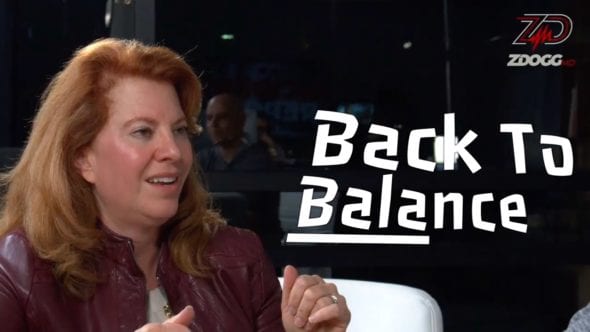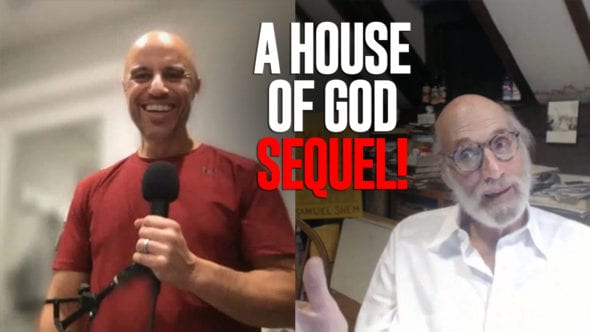Wanna impress your attending, your team, and your patients while honing your clinical skills and bedside manner? Listen up to this crucial piece of advice.
Leave your comments on the original Facebook video below!
– This one is for people in training, okay? Medical students, nursing students, any students. Today I did rounds at the hospital. New medical students, interns, residents, all that. They all did presentations of their patients. I noticed something remarkable, that the students have very varied levels of competence in delivering presentations and information to other physicians or other healthcare providers. Now, why does this matter? “Oh, you know, is it smoke and mirrors? “It’s just external stuff,” no. It is the single most important thing that we do is communicate in medicine.
If you can’t give a concise, organized story about your patient, how the hell are you gonna talk to your patients about their own health, the plan, what they need to do to get it together, how you’re gonna work with them, if you can’t do that with people who know medicine, all right? So here’s the thing, I saw a variety of things and here’s what I saw that worked really well. Put the damn note down.
Know the story of your patient and look your attending physician or your colleagues in the eye and say, “Such-and-such is 37. Here’s the story. “Heart failure, valve replacement. “On coumadin because had some clots, “and so probably needs the coumadin.” That’s the setting for what’s going on. Now coming in with an abnormal INR, we don’t know why, in a difficult social situation. Okay, just in that, I have a picture. I also know that you care enough about that patient to know who they are ’cause you’re looking me in the eye and your notes are down, okay? Then start communicating and be concise.
Just because it happened doesn’t mean you have to tell us about it. We attendings hear at ethernet speeds, like T1 transmission, but a lot of medical students and nursing students transmit at like a 2200 baud modem. Like and we’re like . So you will start to see that your clinical thinking actually parallels your presentation skills many, many times. Now, how do you even start to do this right? Okay, first of all, put down the damn computer and take some written notes. There’s something about the hand-eye motor connection that creates memory. This has been looked at a little bit.
So if you actually write down the stuff about your patient, then later you can sit down at the computer and organize it into a thoughtful note. More ideas will come to you, connections will come to you. But by writing it down, you will have it in your head in a way that is orally conveyable because in so many ways, medicine is an oral tradition. It’s like the great religious traditions. These were handed on, these stories from time to time to time, Native American tradition. Giving a presentation on rounds is the same thing. It’s like the story. I’ll tell you, I was not good at a lot of stuff in medical school that I had to work on, get better at, be diligent about, but the one thing I was really good at was knowing that story because you know what, here’s a secret, I cared about the patient’s story. When you care about that story and you’re kinda starting to learn the medicine, you can start to construct a presentation that not only gets the information across, but gets people riveted to the story, gets them thinking, gets them inspired. How are we gonna help this person?
So that’s my one piece of advice, is I see all different levels of that, and when it’s bad, it is horrible. All I’m thinking is, “How would I ever “let this person touch my mother or my children “in a doctor-patient relationship? No way. “I don’t even trust their thinking. “They can’t express what they’re saying.” So start to work on that, even if you have to practice in front of a mirror, which by the way is cheating, but if you have to do it, do it. All right, that’s my biggest advice to people starting their clinicals. I don’t know, that’s all I got. Logan, what else?
– [Logan] Tacos.
– Tacos.
– [Logan] They’re delicious.
– They are delicious. Become a supporter, why? Because the supporter tribe rocks. We out.
– [Logan] Just a quick note on that is if you eat your tacos with a tortilla underneath them, when you spill out, boom, extra taco. You know what I’m saying?
– You know what, I learned that when I was young. What I would do is I’d go to Taco Bell, I’d order seven bean burritos. I would squeeze the beans out because the bean to tortilla ratio was never ideal. By squeezing it out you actually make a more ideal ratio but then what you do is you tell them, “Look, “Can I just buy three tortillas?” You get the tortillas, that extra bean sauce. Look, people are starving in Japan, guys. You put that extra bean sauce on those extra tortillas, you’ve gotten three more bean burritos. Steal some Fire Sauce ’cause it’s free. Take it home, bring those burritos home, put them in the freezer. Medical students, you’re starving? Yeah, that’s on you. You know the secret, it’s called Taco Bell. The other secret, rent a car exactly the same as your own car, take the tires off it, put them on your car, swap your tires to that car, that’s the best $30 you’ll ever spend.
Related Videos
Category
- The ZDoggMD Show (797)
- Featured Videos (188)
- Doc Vader (142)
- Against Medical Advice (128)
- Medical Humor (95)
- Public Service Announcements (87)
- Music Parodies (74)
- Nurses (59)
- Meditation (38)
- ZVlogg (36)
- The VPZD Show (31)
- ZTalks (28)
- ZBlogg (24)






